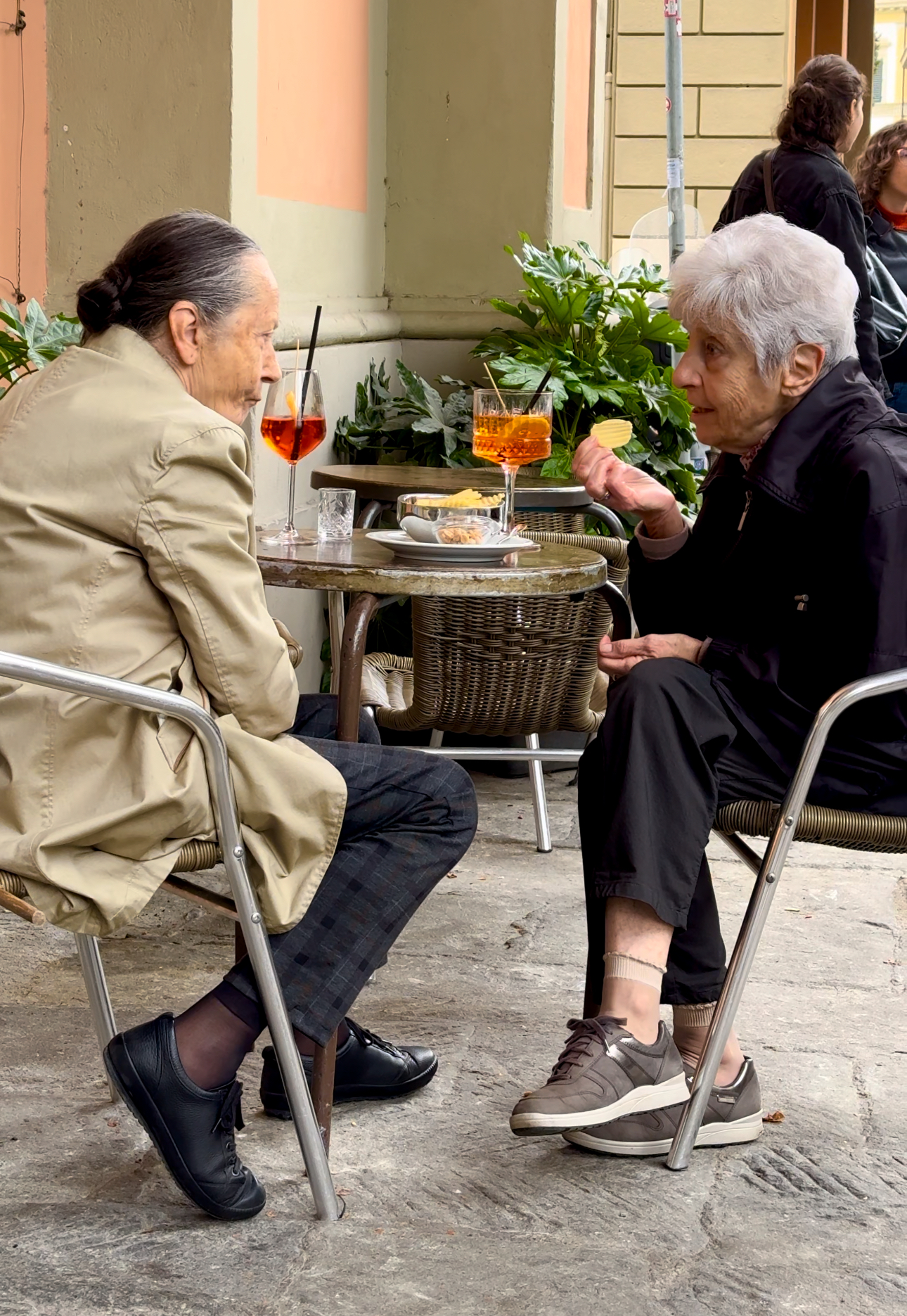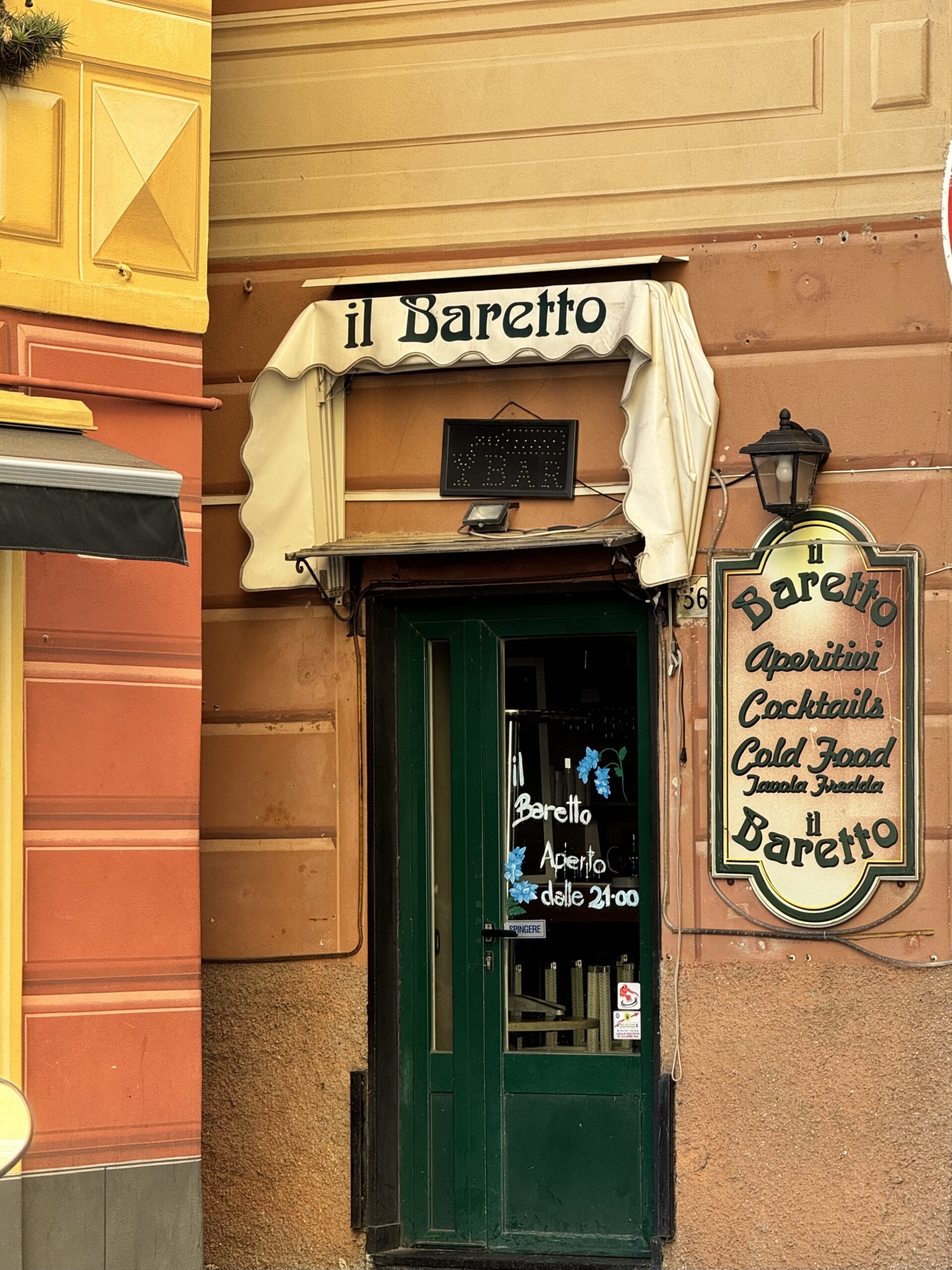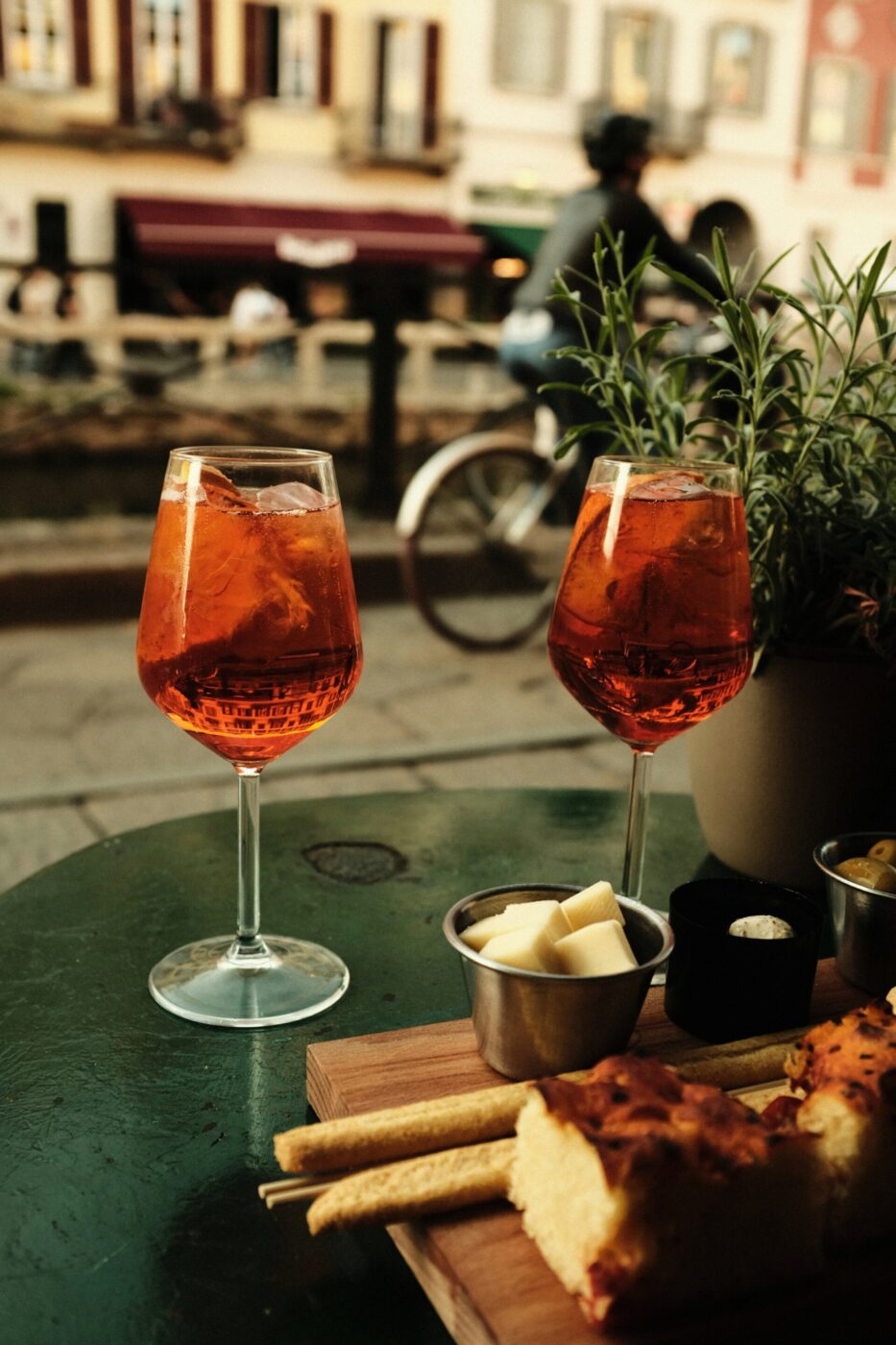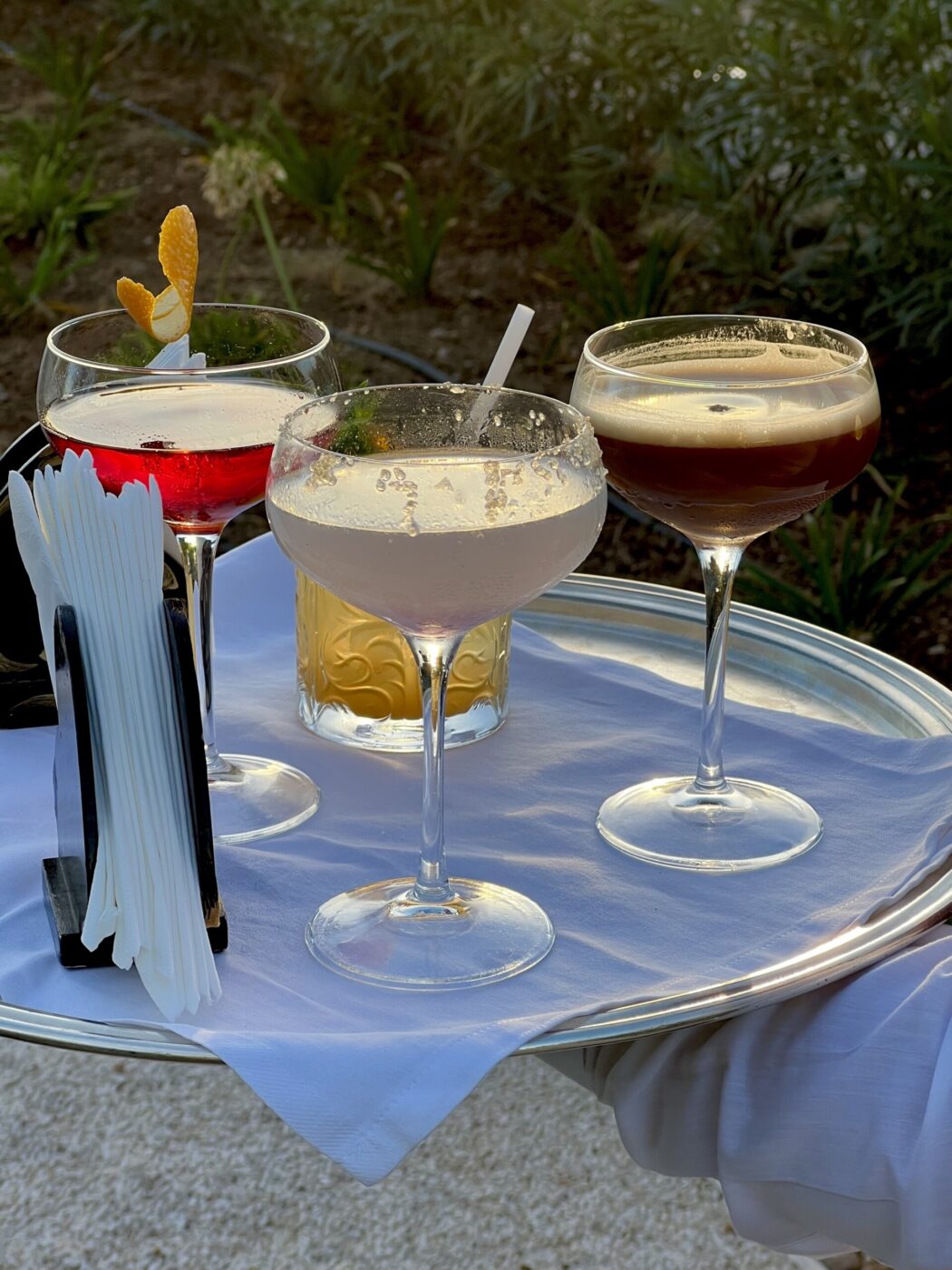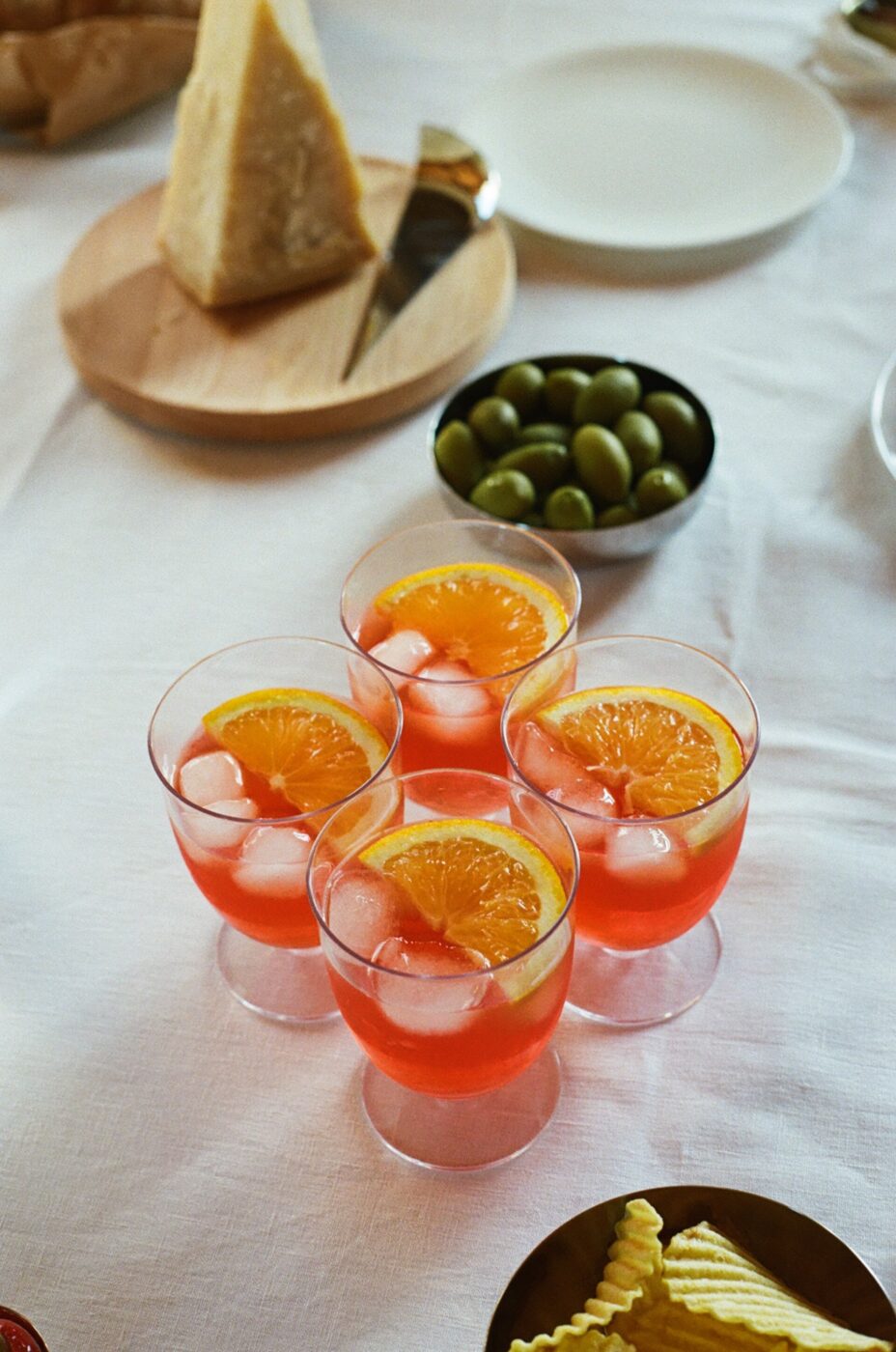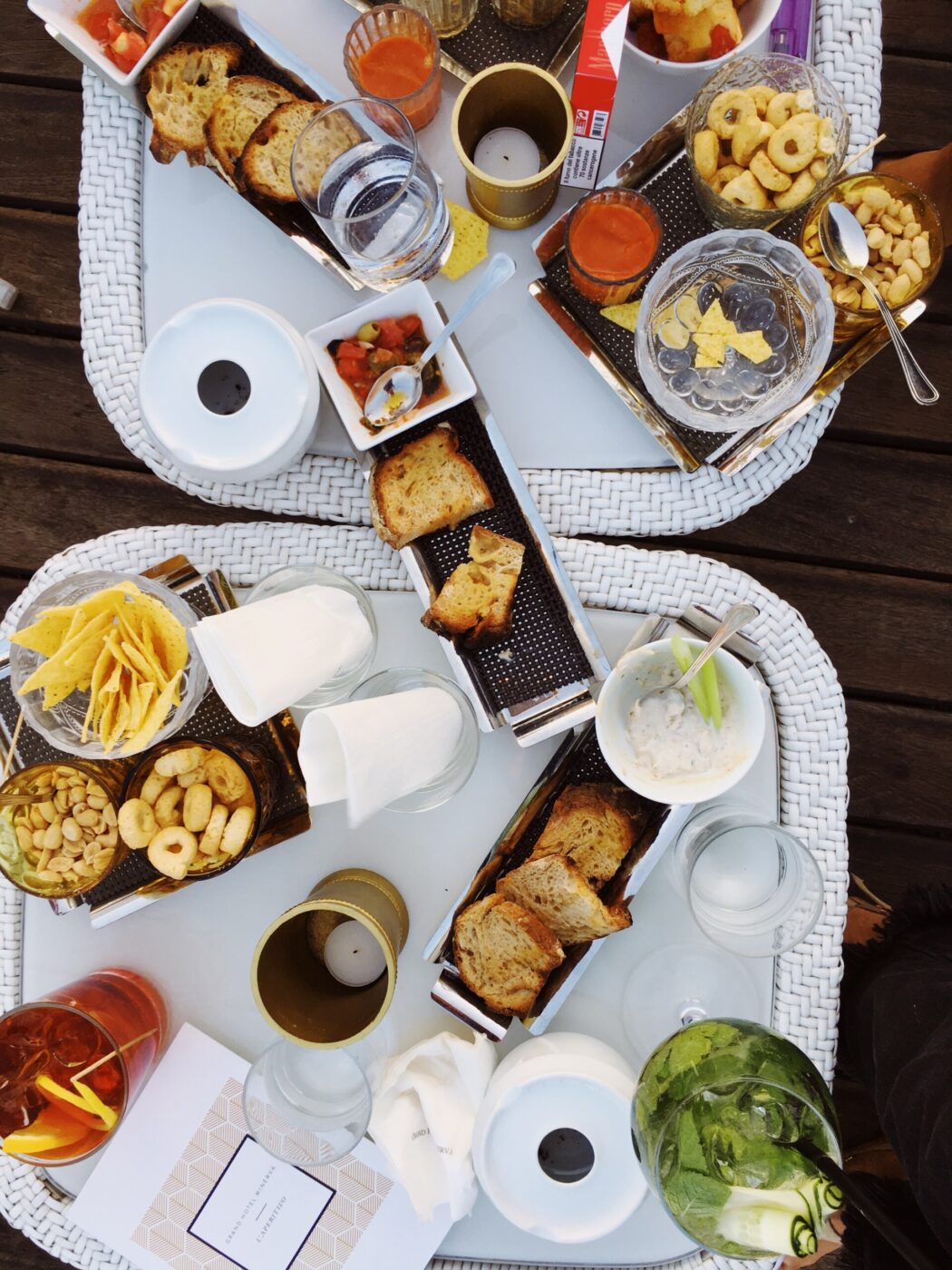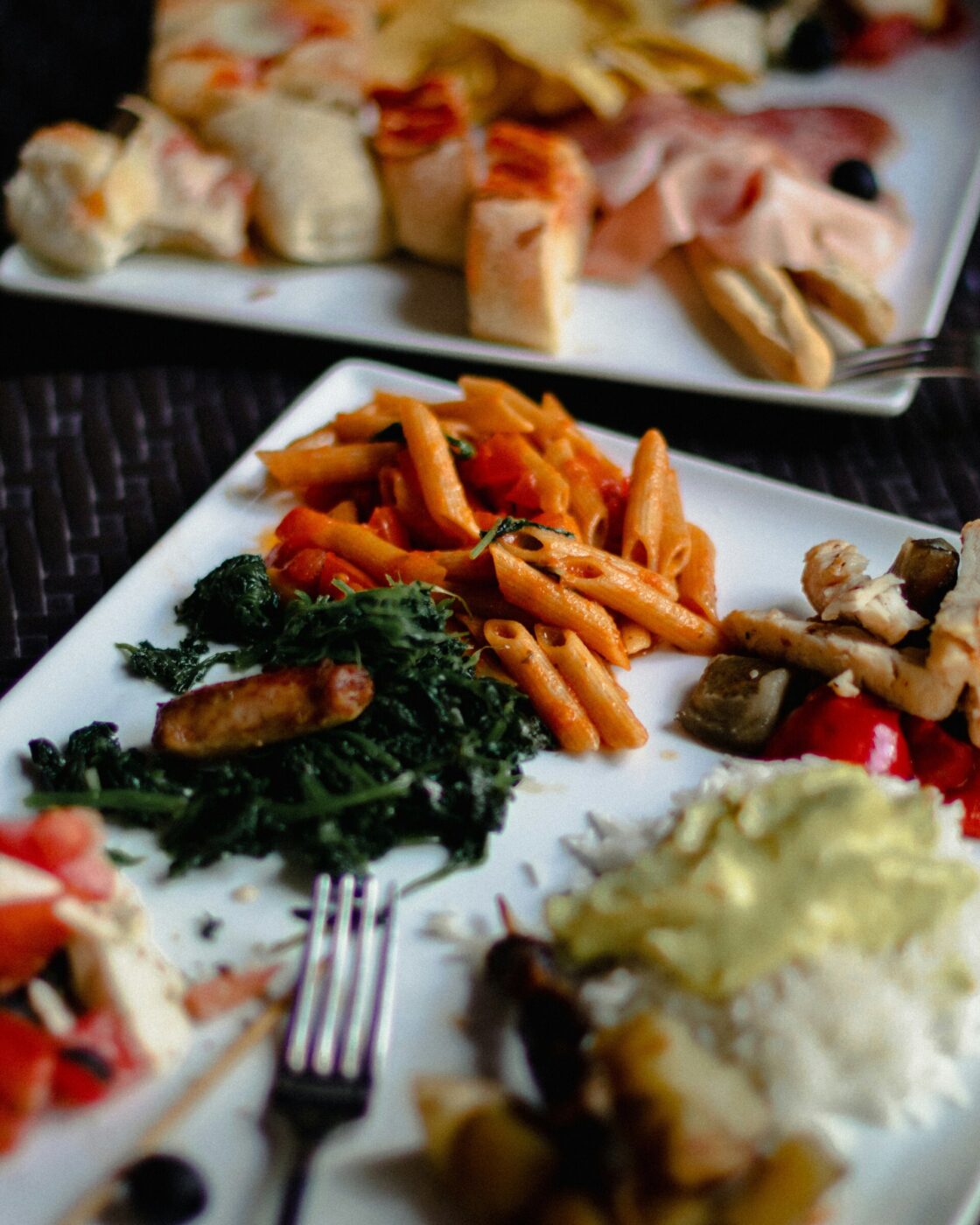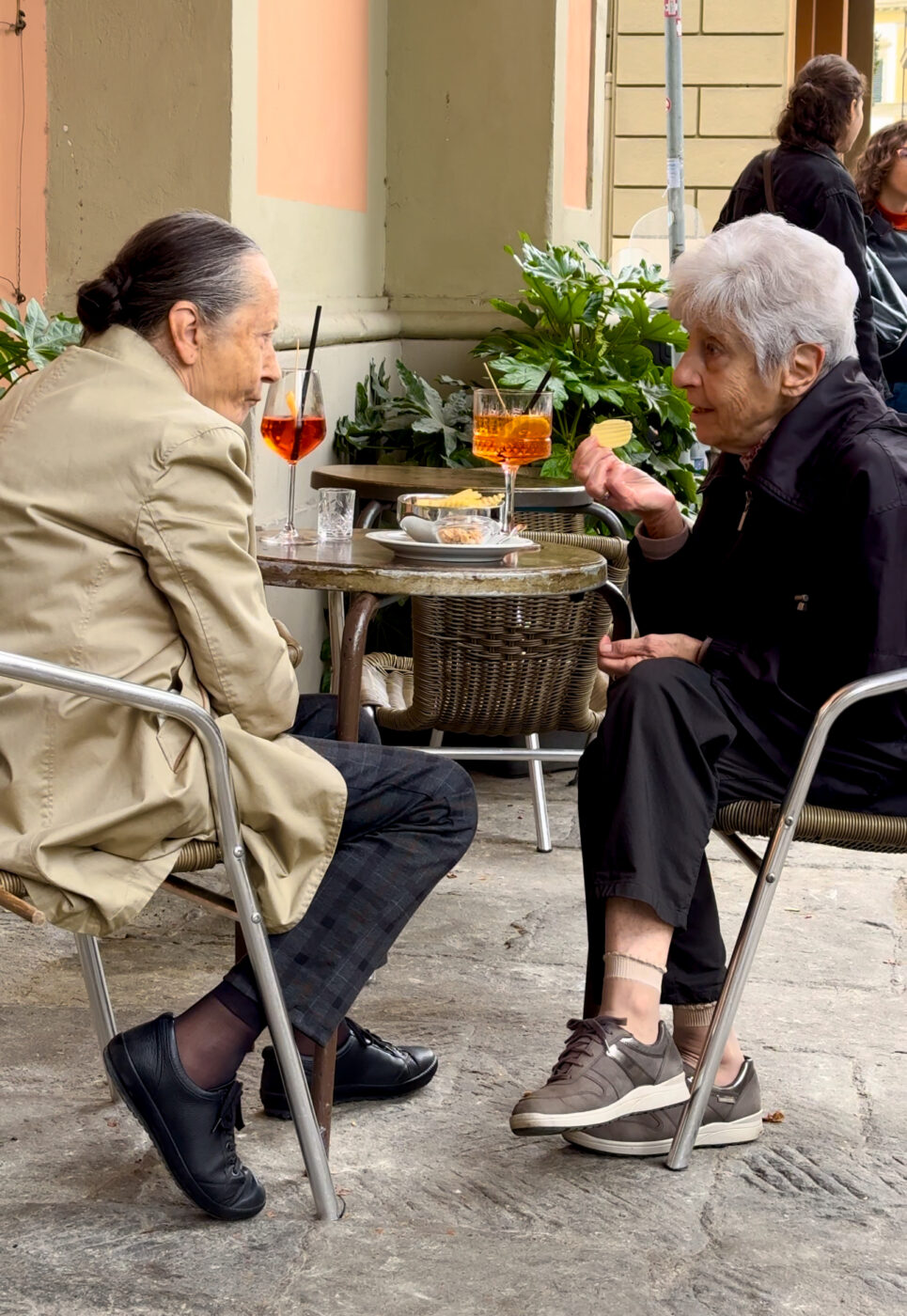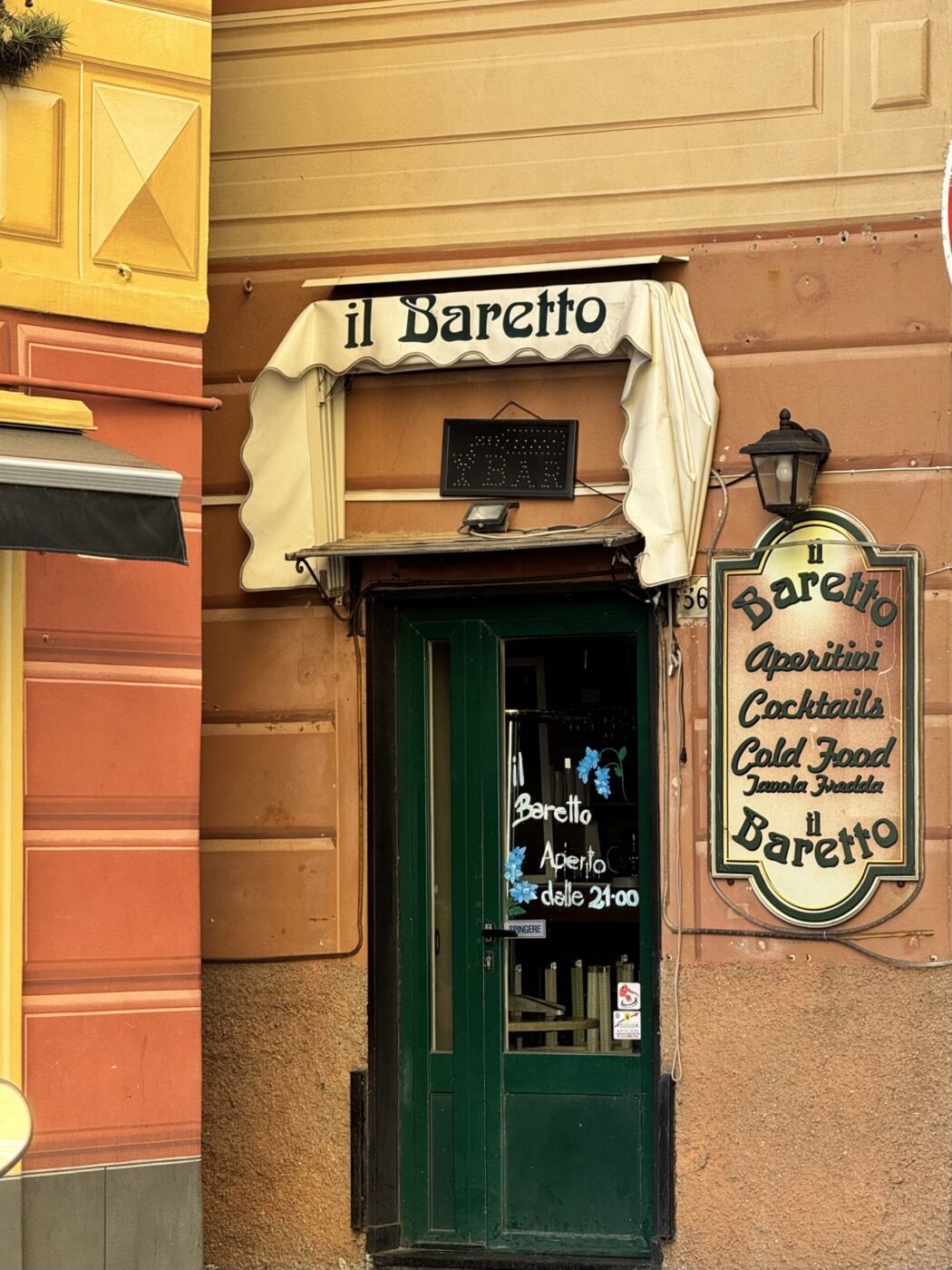“It’s Italian; it can be both a drink and a moment.” The perfect crossword clue for the entry “aperitivo” would be this. Everyone does it, and it’s become such a part of the national way of life that you could call it a tradition. It’s not ancient–claiming that would be historically inaccurate–and like all “traditions”, it’s constantly evolving. And today, we’re in the era of the “apericena,” a neologism that refers to a less sophisticated but significantly more abundant version of an apéritif dînatoire.
Just look around. On menus of places along pedestrian streets in city centers, neighborhood bars, bakeries, and even churches, there’s an explosion of “apericena“: it costs €10-15 for a drink and a board filled with anything from cold cuts, focaccia, and mini pizzas to small portions of regional recipes, seafood, meat, vegetarian dishes, pasta plates, and even those paired with a game of bingo at the senior center, dessert included. From shopping malls to village festivals, apericena is wildly popular, even among Italy’s traditionally-minded populace. And while trendy bartenders and food journalists like me shake our heads in resignation, the phenomenon is so deeply rooted that we might as well start to historicize it.
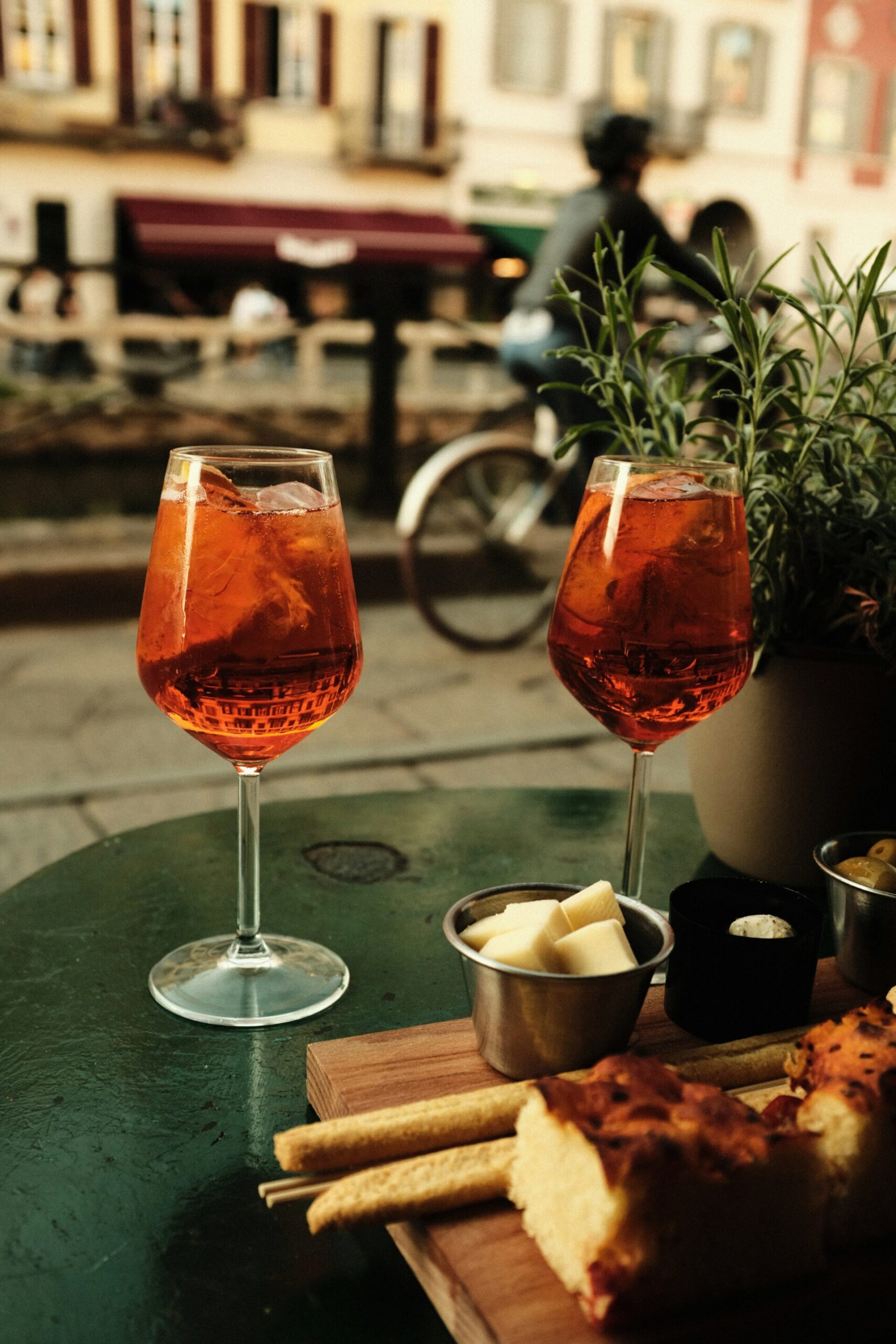
In Ancient Rome, There Was the Aperitivo
In Italian, “aperitivo” means “something to drink before the meal,” from the Latin aperire, meaning “to open.” The idea that the ancient Romans practiced it sounds a bit like an urban legend, but what is certain is that at the time, wine was mixed with water, honey, herbs, and spices to improve its flavor. Not too differently, in 1786 in Turin, Antonio Benedetto Carpano invented vermouth, a fortified and aromatized wine to be consumed before meals. It was an instant success, quickly gaining popularity with Americans, who used it for cocktails, and at home, the beverage launched the ritual of the aperitivo.
The birth of the modern aperitivo as a time of day goes hand-in-hand with the creation of the aperitivo as a beverage. This “moment” was born in Turin but found its capital in Milan, thanks not to vermouth but to Campari, its bitter, and the brilliant marketing ideas that have defined the company since the early 20th century: posters drawn by Futurist artists, commercials directed by Federico Fellini, and concepts like “Campari hour,” as the song of a popular TV commercial went, driven home by the clocks that marked 6:00 PM that were given as gifts to all their client bars. (On the outskirts of Milan, the Campari Gallery is a must-visit for lovers of good drinks, art, history, and advertising.)
Throughout the 20th century and up until the late 1990s, the aperitivo consisted of a glass of wine, wine with soda, or wine, soda, and bitter: Campari in Milan, Aperol in Padua, Select in Venice. A few chips, a couple of olives, leftover mini pizzas, and toast from the daytime offerings, and then you’d either head to lunch with relatives or go out to dinner. Born aristocratic, the aperitivo became a simple affair–today we might even call it frugal. After Sunday morning Mass or work during the week, aperitivo included just enough to nibble on to avoid getting too drunk too quickly on an empty stomach.
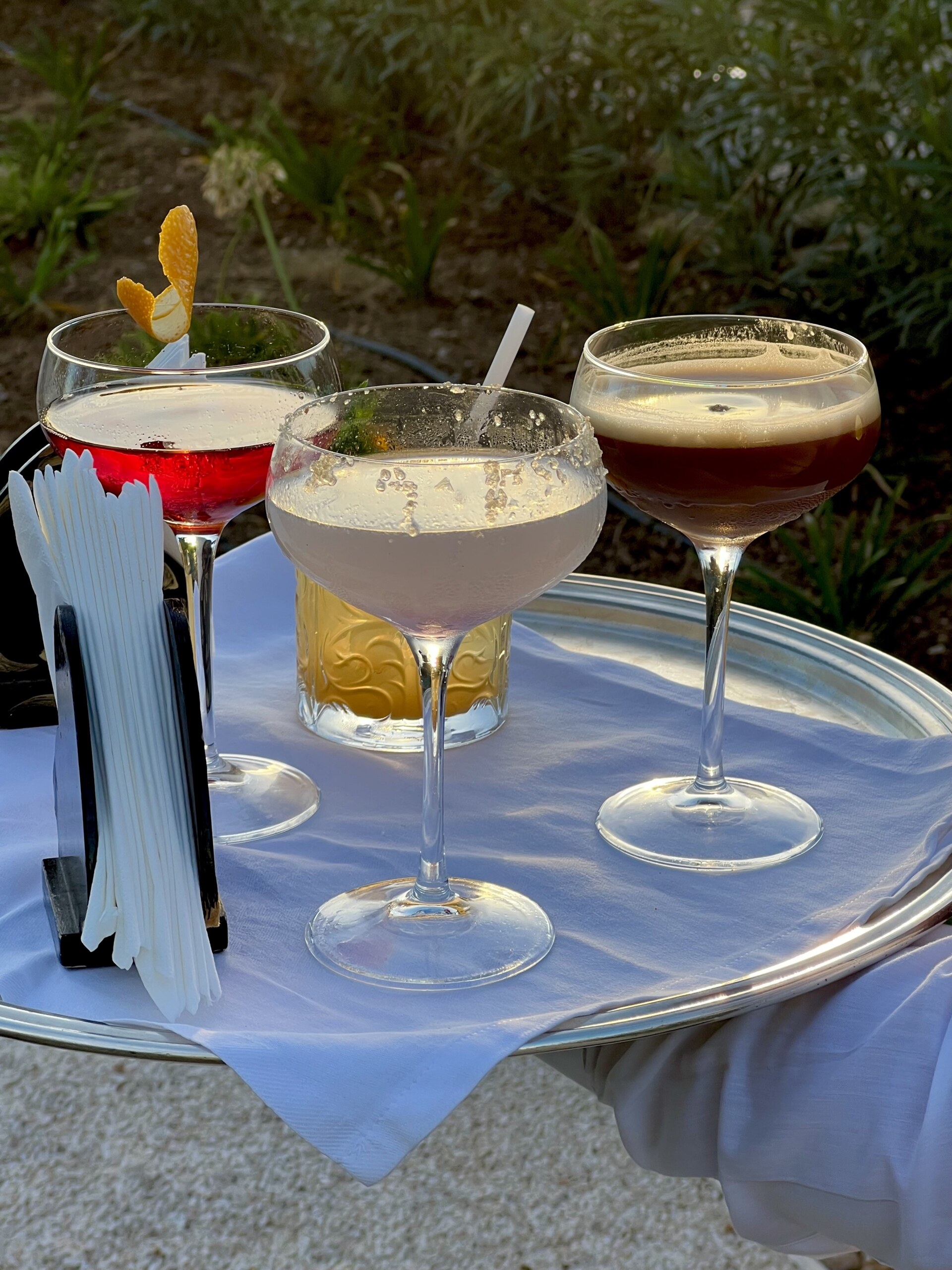
Happy Hour Comes Along
But “Milano da bere”, as another commercial proclaimed (this one for Amaro Ramazzotti in 1980), is a city where you work hard, but you play hard as well, and a decade after the yuppie myth and the era of the paninari, the “Milanese aperitivo” is invented. And–since in Milan they speak a city-specific dialect sprinkled with broken English–it was renamed “happy hour”. The idea came from entrepreneur Vinicio Valdo, the first to serve an all-you-can-eat buffet included in the cost of a drink. At his venue, Cap San Martin, trendy teens and college students would sip vodka tonics, mojitos, or piña coladas, while piling their plates with cold pasta and rice salad. Just a few steps away, at Bar Rattazzo, the more alternative crowd would order 66cl beers and refuel with polenta and meatballs in sauce, served strictly on plastic plates. It wasn’t chic, but you’d meet up with friends after school or on Saturday before going dancing to solve the “dinner problem”–and it was cheap.
In 1998, Valdo opened Roialto, a massive venue with large illuminated chandeliers and themed food stations offering different types of cuisine, from pizza and pasta to sushi and salads. It retained the happy hour formula, but with the promise of being “better” and delivering a certain idea of luxury–opulent and abundant rather than sophisticated. By then, the happy hour phenomenon had spread like wildfire across the city, but the competition wasn’t about who had the best bartender; it was about who offered the most loaded buffet. While it may seem like this would’ve been the beginning of the end for the aperitivo, it’s also the reason why the 7 PM ritual became a part of the modern Dolce Vita.
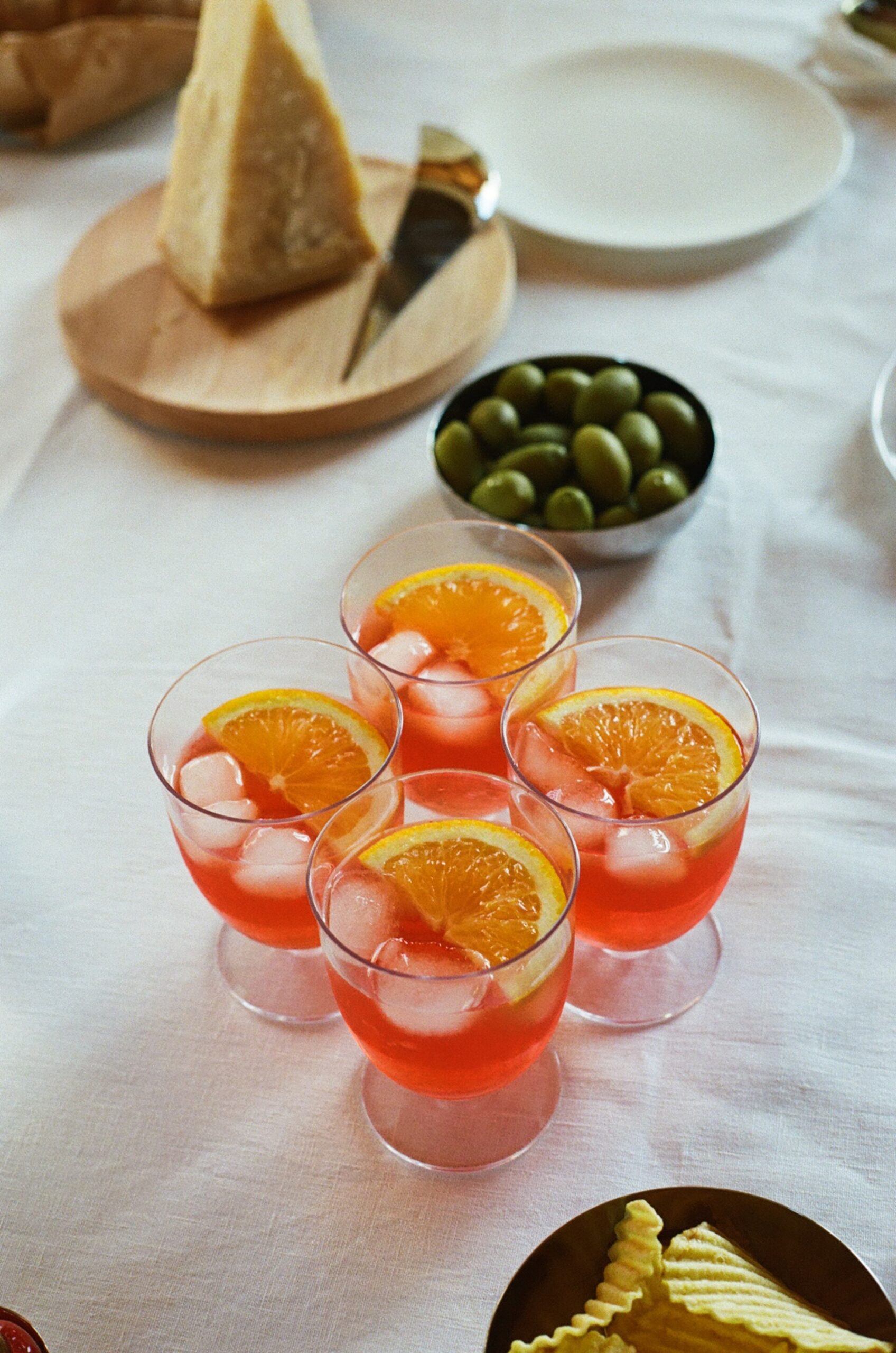
The Arrival of the Spritz
In the late 1990s, when food-filled happy hours were flourishing in Milan, no one was drinking spritzes. In “modern” venues, people drank long drinks, rum and cola, and decidedly unsophisticated cocktails. The spritz came later, in 2003, with the acquisition of Aperol by the Campari Group and the launch of a marketing plan to take over the world. The new owners of Italy’s two best-selling bitters repositioned the brand, identifying the Aperol spritz with a moment and an idea of aperitivo: Campari is sophisticated, Milanese, the bitter of the Negroni, the “Red Passion” of red carpets and cinema. Aperol, on the other hand, is fast, social, and pop–it’s a convivial experience. Bottles appeared in bars all over Italy, and in 2006, a television campaign launched with ads set to the tune of “Spritz Life” (a cover of “Street Life” by Randy Crawford and The Crusaders). Airing all summer long, the commercials showed hot, young Italians partying with Aperol spritzes, while themed branded events were organized on the country’s beaches. It worked. The operations expanded to London and New York, where it’s said that actors were paid to order Aperol Spritz to have the drink catch on globally (though this is probably just another urban legend).
From mixology consultant Giovanni Ceccarelli–a 37-year-old who specializes in research, outreach, and education in the bar world–I’ve learned that a cocktail becomes famous not only if it’s good, attractive, easy to make, and replicable, but if it embodies an idea–and the spritz did exactly this, coming to symbolize aperitivo and to stand for a small vacation that you could take every day. Thanks to visionary entrepreneurs, Milan, Aperol, and its marketing case history, the aperitivo evolved from something for old men at the bar or young people before a night out into a national social ritual. From Milan, Venice, Turin, and generally Northern Italy, it slowly but surely spread further south and more universally. And this is where the story of the contemporary apericena truly begins.
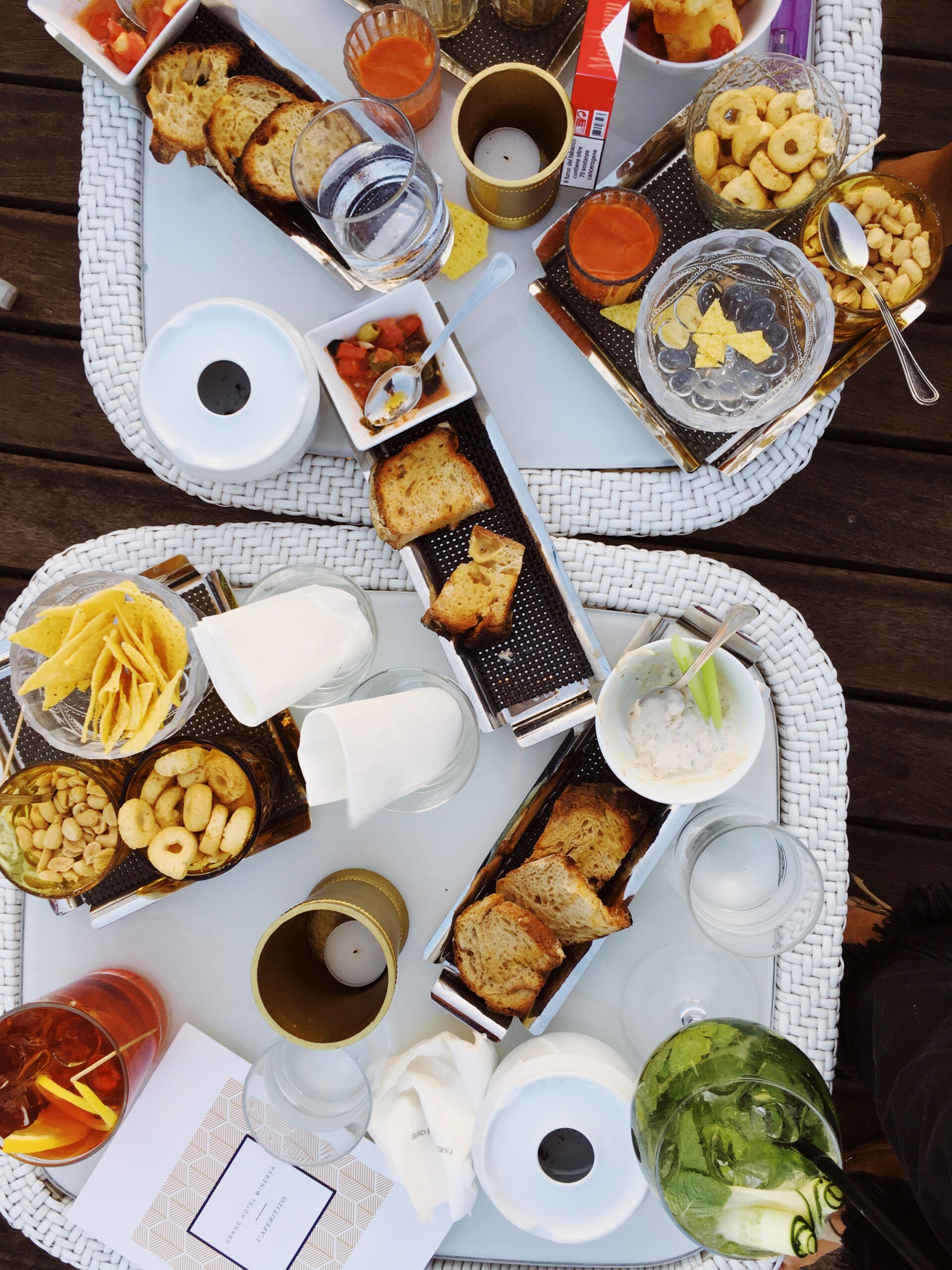
The Age of Abundance
In Milan, what happy hour is has been clear to those who witnessed its rise. Drinking with food was cutting-edge for Gen X, and after becoming an institution, it spread (with that 20-year delay) to those who would never have gone out to “grab a drink before dinner” at trendy downtown spots–that is, Boomers, retirees, the suburbs, neighborhood bars, and tavole fredde specializing in lunch breaks. In recent years, apericena, whether tacky or of higher quality, has spread to cities all over Italy, both large and small, becoming a common practice with regional, typical, more-or-less creative variations, at very affordable prices, and the drink of choice is essentially spritz. And people have started to invite you over to have apericena at home. Nothing bad, but far from the allure of the aperitivo in the beginning.
As I write, I’m clearly letting some snobbery slip through, aimed at the baker who serves up leftover focaccine to the neighborhood with glasses of Prosecco and at the value system that prioritizes quantity over the quality of cocktails and accompaniments. I’m aware of it–it’s the same undertone found in the articles my colleagues wrote during the 2020 pandemic, when they hoped that Covid would bring about the end of buffets in favor of a renewed obsession with hygiene. “Covid also did great things,” they quipped. Too bad that once the emergency was over, apericena came back stronger than ever, vaccinated from the traumatic experience and determined to ensure the survival of the species. And that species is not the restaurateurs.
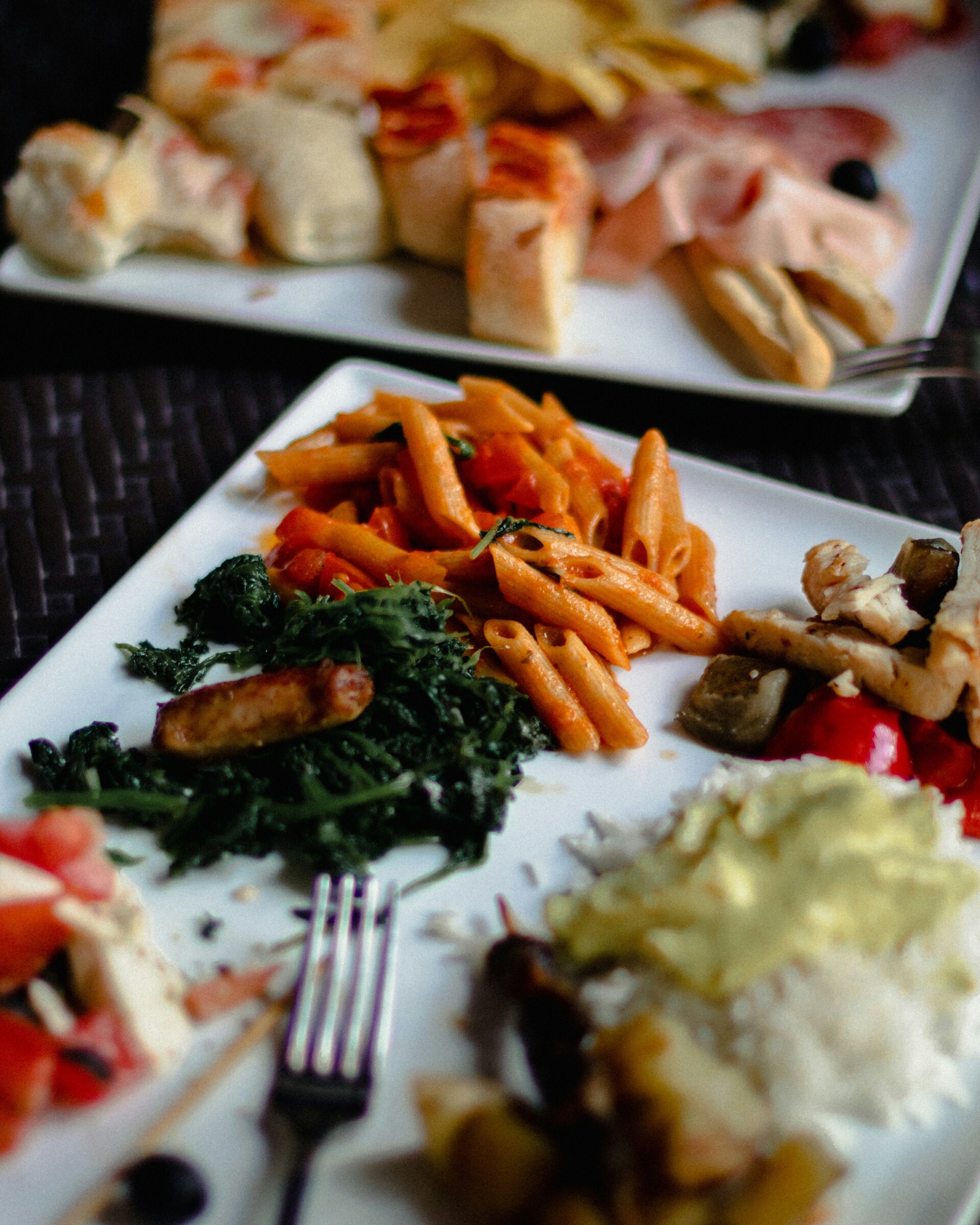
Apericena: The Last Dance of the Aperitivo
Something has indeed changed since Covid–not only in name but also in form and a bit in function. While the Milanese happy hour was a buffet, and there are still some around, apericena is now more of a large plate of various comestible items served at the table. But it’s not the kind of service that has changed, it’s the promise behind. Happy hour was cool, young; now it’s a word delivering decadence. It’s no longer the hour of happiness; it doesn’t give you emotions, it guarantees you portions. It offers the opportunity for an informal meal, at an earlier hour, without pretensions, accessible to everyone, even in price. It has opened up a new market–or maybe it has simply revealed a new demand–for casual moments, far removed from the gourmet-ification of food and the rigidity of service that has occurred over the last 10 years. Apericena has taken the dinner crown from real restaurants and handed it over to bars and delis, and has also changed the “very Italian way” we entertain at home. It’s a revolution, in its own way, and it captures a snapshot of a moment in Italian society. Just open TikTok to discover a world of various venues competing against each other with gargantuan plates and promotions. They’ve launched a new trend, and this time, it’s rising from the south back up to the north.
